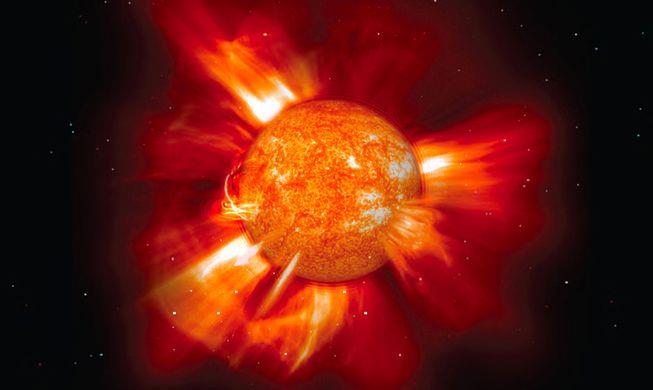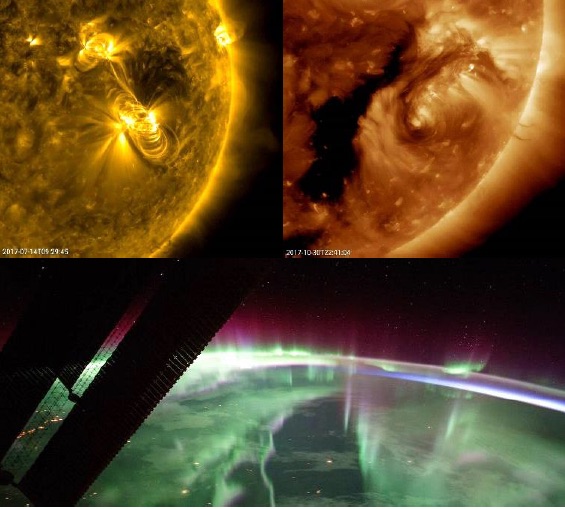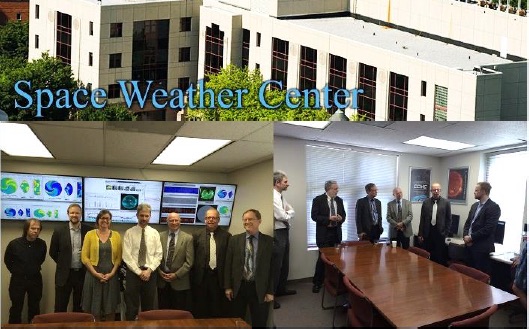Master of Science and Undergraduate Minor Programs at The Catholic University of America

Our goal: To provide students with an understanding of space weather system science, including the origins of space weather on the sun, transport of particles and radiation through space, interaction of the solar wind with the magnetosphere, space plasma physics, magnetosphere-ionosphere coupling processes, and the chemistry, dynamics, and electrical properties of the ionosphere and thermosphere. These programs are built on a strong partnership between CUA and NASA Goddard Space Flight Center (GSFC).
Why Space Weather?

Master of Science in Applied Space Weather Research
- Students with, or about to earn, bachelor’s degrees in the sciences, mathematics, or engineering and other technical disciplines will be eligible for this Master’s program.
- Both thesis and non-thesis options will be available, as well as a non-thesis 4+1 track for continuing undergraduates.
- The thesis option requires:
- 18 semester hours of core space weather courses. Any six of the following three-credit courses can be selected to fulfil this requirement: ASWR 601, ASWR 602, ASWR 603, ASWR 604, ASWR 628, and PHYS 525, ASWR 562, PHYS 536.
- Two additional courses from the same list or two elective non-ASWR courses can be added to meet the 24-credit goal.
- The master’s thesis research project will account for an additional 6 semester hours. The topic of the master’s thesis research will be selected in consultation with the student’s program advisor and may be linked to work done in coordination with NASA Goddard Space Flight Center.
- The non-thesis option requires:
- 24 credit hours of core ASWR courses from the above list
- 6 additional graduate-level credit hours that may comprise courses taken in other departments at CUA, with the student’s program advisor or the director’s consent.
Minor in Applied Space Weather Research
- Students currently, or soon to be, enrolled in any major are eligible for this Minor program.
- Students must complete 18 credit hours for this minor, which includes:
- 4 three-credit courses from the core courses options and
- 2-3 electives chosen from those offered on the course list.
The CUA Space Weather Center (SWC)

Some of the space weather courses will offer a lab component to be taught at CUA’s Space Weather Center. The SWC will include a variety of instructional resources for students to more easily visualize processes in the space environment. The Center will be closely linked to NASA/GSFC’s Community Coordinated Modeling Center (CCMC) to provide students the means to interactively run space weather models that simulate the various physical phenomena occurring from the surface of the sun to Earth’s upper atmosphere.
Current Course List
| Core Courses | Level | Credits |
|---|---|---|
| Numerical Methods for Space Weather | 400/600 | 3 |
| Space Plasma Physics | 400/600 | 3 |
| Space Weather System Science | 400/600 | 3 |
| Solar and Heliospheric Physics | 400/600 | 3 |
| Magnetosphere-Ionosphere-Thermosphere Physics | 400/600 | 3 |
| Elective Courses | ||
| Space Weather Impacts on Technology and Human Health | 400/600 | 2 |
| Space Weather Policy | 400/600 | 2 |
| Space Weather Forecasting | 400/600 | 2 |
| Space Weather Observations and Sensors | 400/600 | 2 |
| Computational Physics | 400/600 | 3 |
| Advanced Electromagnetic Theory | 600 | 4 |
| Thermodynamics and Statistical Mechanics | 400 | 3 |
| Electricity and Magnetism | 400 | 3 |
| Statistical Mechanics | 600 | 4 |
| Mathematical Methods for Theoretical Physics I | 400/600 | 3 |
| Mathematical Methods for Theoretical Physics II | 400/600 | 3 |
| Master's Thesis Research | 600 | 6 |
400 level courses are open to both Minor and Master's students.
600 level courses are reserved for graduate students only.
Photos courtesy of Catholic University and NASA IOTD.
